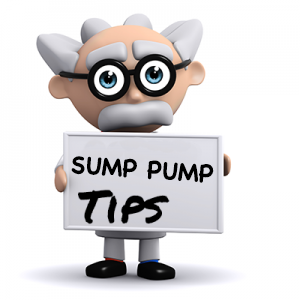-
3 Signs You Need a New Sewage Pump
October 11, 2018Below is a list of a few things you never want to see break down: The 87’ Volvo you’ve owned since college breaking down during a long road trip. Your 87 year old grandma breaking it down during the bridge of a popular hip-hop song. (Most costly of all) Your sewage pump breaking down after your extended family comes over for a 4 course Thanksgiving dinner. Sewage Pumps are used to transport waste and solids up to 2 inches in diameter to a public sewer or septic tank. Though sewage pumps typically have a service life that can last 10 or even 30 years depending on circumstances and variables, they are not immune to certain malfunctions without regular maintenance. Below are a few signs and indications that you may need to call your local plumber or look for a replacement sewage pump. Smells Perhaps the most obvious (and arguably worst) sign your sewage pump needs replacing would be the-why-does-my-basement-smell-like-my toilet-bowl fragrance suddenly emanating from your basement. This could be an indication that your pump is not emptying the pit or basin after it turns on. Smells could also mean you have a pipe leak in your system. If you or your local plumber can’t find a pipe leak, this could mean your sewage pump is faulty and may need replacing. Continuously Running If the pump is running constantly this could be an issue with your float switch. Float switches basically tell your pump when to turn on and when to turn off. When the water within the pit or basin reaches a certain height, it moves the float switch which in turn activates the pump. If the float switch is tethered, make sure the switch can properly hang straight down and is not encumbered or stuck. Constantly running can lead to a pump burning itself out or significantly shortening its service life. Fluid not being pumped If your pump is running but the basin is not emptying of wastewater, it could mean that your pump is clogged or not drawing enough power to create the suction necessary to pump. This could also be a symptom of your pump being overheated and shutting off from thermal overload. Be sure to monitor your pump and to minimize any toilet flushing to ensure that no wastewater floods over your basin or pit. Please note, that if there are a few inches of water in the bottom of the pit at any given time, this is normal and nothing to worry over. Remember that taking care of your sewage pump will mean your sewage pump taking care of you. Pump repairs can be costly and it may be more cost effective just to purchase a replacement. Fret not because if you’re reading this, you’re in the right place. PumpProducts.com carries a wide variety of sewage pumps from the most reliable brands in the industry like Goulds, Zoeller, and Myers among others. We also offer some of the lowest prices on the web. Call our application engineers and they can help size you out the right pump for your application. This means next Thanksgiving you can eat comfortably, knowing your reliable sewage pump is doing the dirty work so you don’t have to. Pump Products application engineers are standing by to help you find the right pump, as well as to provide price quotes, stocking availability and shipping information. Call our toll free number 1-800-429-0800 to speak to an expert today.
-
5 Sump Pump Tips & Tricks: How to EXTEND the Life of Your Sump Pump
April 5, 2018Sump Pumps sit in a pit or basin in your basement and prevent residential flooding by draining accumulated water. By doing some simple maintenance, you can ensure that your sump pump is ready to tackle anything Mother Nature has to throw at it. 1. Clean the Sump Pump Although, this one seems obvious, making sure your pump is clean guarantees efficiency and a long service life. To clean your pump, start by removing the pump from its basin or pit after disconnecting it from the power supply. Next, clean any dirt or debris off the outside of the pump. Be sure to clean the inlet screen on the bottom as the screen can get clogged over time. Also clear any dirt, gravel, sand, or other debris that may have accumulated in the sump pit as well. This will help make sure your pump stays cleaner, longer. Depending on how often it’s used, your pump should be cleaned at least once a year. 2. Test the Pump Pour water from a bucket or large container into the basin. Make sure the float switch is not obstructed and is able to move freely. As the water level rises, the float should activate the pump and water should begin to drain. This will indicate that your pump is in working order. 3. Clean Drainage Pipes Check your pipes for any blockages or clogs so water can flow unimpeded. Also make sure all the pipes are connected tightly and there are no leaks. If your pipes are clogged, you may need assistance from your local plumber. 4. Level the Pump Make sure your pump sits level. If your pump is off kilter, the float arm may become jammed. This will result in the pump being unable to become activated. 5. Check the Power Source Make sure you’re plugged in! Check the power cord to make sure it’s not damaged. You may also want to have a battery backup system so your pump can continue to work in events such as a power failure. There is no rule for how often a sump pump should be replaced, but nothing in life lasts forever! Your pump’s life depends on how often it runs and how often maintenance is done. If you’re in the market for a new sump pump, look no further than the plethora of pumps PumpProducts.com offers! PumpProducts.com sales specialists are standing by to help you find the right pump or part, as well as to provide price quotes, stocking availability, and shipping information. Call our toll free number 1-800-429-0800 to speak to an expert today.
-
Inspector Pumphead’s FAQ: Well Pump Edition
May 23, 2017Welcome to Inspector Pumphead’s Frequently Asked Questions! I will be answering some of the most common questions we get on a specific topic. Some of this information may also be available elsewhere, but this feature will serve as a convenient one-stop source. In this edition, I'll talk about well pumps. Well Pump FAQ 1. Why are there two different types of well pumps listed What’s the difference between ‘jet’ and ‘submersible’ Jet well pumps are surface pumps configured above the well system, while a jet assembly system (twin pipe or Packer depending on the application) is inserted into the well shaft. The main components of a jet pump are a nozzle, venturi and the jet itself. The physics and mechanics of it are interesting, but we’ll focus on the basics here: these components work together to create a vacuum above the water, which allows atmospheric pressure underneath to push the water upwards. Jet pumps can be either horizontally or vertically configured and are much the same size and shape as other pumps. Submersible well pumps are actually installed and submerged under water at the base of the well. Whereas jet pumps use suction to pull water, submersible pumps create pressure to push the water in an upward direction. Submersible well pumps are cylindrical and “thin” in diameter so as to easily fit down a well shaft. They are often tall as well since submersible well pumps usually contain multiple stages stacked on top of each other. A stage is simply a compartment with an impeller, diffuser and upthrust washer that increases the pressure as water moves up through each stage. The more stages, the higher the head. 2. So which one is better As is always the case when it comes to pumps, the answer is “it depends on your system and application.” Submersible pumps are more efficient, especially in deeper wells. The farther the pump is away from the water table, the less effective it will be. Since submersible well pumps are closer to the source, they are more reliable. The downside to a submersible pump is that it must be pulled out for maintenance, repair or replacement. Being submerged also exposes the pump to contaminants such as sand. 3. What constitutes a ‘deep well’ or ‘shallow well’ The depth of the well refers specifically to the depth of the water table, which is the top of the reservoir. A water table 25 ft. or fewer underground, while any water table deeper than 25 ft. is considered a deep well. 4. What is a convertible jet pump A convertible jet pump is a pump that can be configured for either shallow well or deep well applications with the proper fittings. Convertible jet pumps are often built as deep well jet pumps and include a bolt on shallow well adapter. Deep well fittings, such as the jet assembly (twin pipe or Packer) are usually purchased separately. 5. Why would I need a convertible pump Shouldn’t I just get either a deep well or shallow well pump Usually you’d be able to stick with either one or the other type of jet well pump. In some areas, however, water tables may fluctuate due to the climate, unique elevation, topography changes or other factors. A convertible jet well pump ensures that you will be prepared and will continue to receive well water in such a case. Pump Products application engineers are standing by to help you find the right pump, as well as to provide price quotes, availability and shipping information. Call our toll free number 1-800-429-0800.








